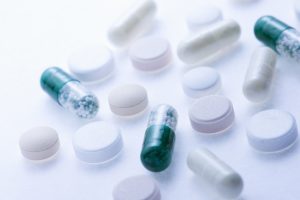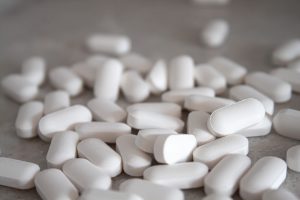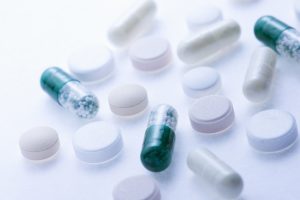Yeast infection and periods are two topics that affect countless women regularly. While they may seem unrelated, many women have noticed a connection. This article discusses yeast infection and period, discussing how hormonal changes during menstruation can impact the occurrence of these uncomfortable fungal infections. Understanding how this relationship works is crucial to prevent vaginal yeast infections and ensure optimal vaginal health effectively.
Yeast infection and menstruation
Yeast overgrowth infections, also known as vaginal candidiasis, are a prevalent condition caused by an overgrowth of the fungus Candida in the vagina. Menstruation can often exacerbate this infection due to hormonal changes that occur during this time. The fluctuation in hormone levels, specifically estrogen and progesterone, can create an imbalance in the vaginal microbiota, making it more favorable for yeast to multiply. This is why many women experience recurrent yeast infections right before or during their periods.
During menstruation, the pH level of the vagina tends to be higher than usual, further promoting yeast overgrowth. Additionally, tampons or sanitary pads can create a warm, moist environment that fosters fungal growth. It is vital for individuals experiencing both a yeast infection and menstruation to practice good hygiene habits, such as changing sanitary products frequently and avoiding wearing tight-fitting clothing to promote air circulation in the genital area.
Women can proactively prevent or manage these uncomfortable conditions by understanding the connection between menstrual cycles and yeast infections. Seeking medical advice when symptoms arise is essential for accurate diagnosis, and appropriate treatment options such as antifungal medications or probiotics tailored for vaginal health may be recommended.
Signs of a vaginal yeast infection during periods
Vaginal candidiasis can present with additional symptoms during menstrual periods, making them more uncomfortable for women. One common sign of vaginal yeast infections during periods is increased vaginal itching and irritation.
Hormonal changes during menstruation create an ideal environment for yeast overgrowth, leading to intensified itching and discomfort.
Another noticeable symptom is an increase in vaginal discharge. Yeast overgrowth often causes a thick white discharge with a cottage cheese-like consistency. This discharge may become even more pronounced during periods due to the combination of menstrual blood and the excess production associated with the infection.
Some women also experience heightened sensitivity or pain during sexual intercourse when they have yeast overgrowth during their period. The inflammation caused by menstruation and the fungal infection can make penetrative activities uncomfortable or even painful, further impacting one’s overall well-being.
Read also: What You Should Know About Yellow Discharge Yeast Infection
Do periods flush out a vaginal yeast infection?
The relationship between yeast infection and periods is a common concern for many women. While periods do not directly flush out vaginal candidiasis, hormonal changes during menstruation can impact the occurrence of these fungal infections. The fluctuation in hormone levels can disrupt the vaginal microbiome, creating an environment conducive to yeast growth. Understanding this connection is crucial to managing both issues and effectively maintaining optimal vaginal health.
Women must be mindful of their bodies during their period and take necessary precautions such as maintaining good hygiene, avoiding irritants like scented products or tight clothing, and seeking appropriate medical advice. By doing so, they can minimize discomfort and ensure better overall vaginal well-being throughout their menstrual cycle.
Yeast Infection And Periods: Can Periods Cause Vaginal candidiasis?
Yeast overgrowth and periods are common concerns among women, and interestingly, there is a connection between the two.
Vaginal yeast infections after periods can be uncomfortable and frustrating for many women, impacting their overall well-being. By recognizing the link between yeast infection and periods, women can take proactive steps to minimize their risk, such as maintaining good hygiene and seeking appropriate medical guidance.
Treating vaginal candidiasis during periods
Treating a yeast infection during your period requires special attention. Over-the-counter antifungal creams or suppositories can relieve symptoms and help clear up the infection.
Using pads instead of tampons during this time can also help prevent further irritation. Maintaining good hygiene, wearing breathable cotton underwear, and avoiding harsh soaps or douches are additional measures to promote faster healing.
It’s worth noting that if your symptoms persist or worsen despite treatment, you should consult a healthcare professional for further evaluation. They may recommend more potent prescription medications or investigate other causes of recurring infections.
Causes of Vaginal Candidiasis after Period
Several reasons can cause yeast infections after periods. One of the significant causes is hormonal changes that occur during menstruation. Hormonal fluctuations can unbalance the bacteria and yeast in the vagina, leading to an overproduction of yeast and subsequently causing an infection. Additionally, the drop in estrogen levels post-period can create a more favorable environment for yeast to thrive.
Another reason for yeast infections after periods is related to hygiene practices. Proper hygiene becomes even more critical during menstruation as blood provides a breeding ground for bacteria and yeast.
Failure to change tampons or sanitary pads regularly, using scented products or douches, or not thoroughly cleaning the genital area can all contribute to developing a yeast overgrowth infection.
Managing Yeast Infection and Periods
Managing your period and vaginal candidiasis can be challenging, but you can effectively address both issues with the proper knowledge and care. It is important to note that hormonal changes during menstruation can impact the occurrence of yeast overgrowth.
Therefore, it is crucial to prioritize good menstrual hygiene practices, such as changing sanitary pads or tampons regularly and avoiding wearing tight-fitting underwear during your period to prevent yeast infections.
In addition to maintaining proper hygiene, there are other steps you can take to manage both your period and yeast infection.
One effective strategy is to use fragrance-free products for feminine hygiene, as scented products may disrupt the vaginal pH balance and increase the risk of a yeast infection.
It is also advisable to avoid douching or using harsh soaps in the genital area, as this can further disturb the delicate vaginal flora.
Suppose you are prone to recurrent infections or experiencing persistent symptoms such as itching or abnormal discharge during your period. In that case, it is recommended to consult a healthcare expert for accurate diagnosis and appropriate treatment options.
When to see a doctor
Knowing when to see a doctor is essential for managing yeast infections and periods.
If you are experiencing symptoms such as persistent itching, burning sensations, unusual vaginal discharge, or pain during intercourse, it may be time to consult a healthcare professional. These symptoms could indicate a yeast overgrowth or an underlying condition that requires medical attention.
It is also essential to seek medical advice if your usual treatment for yeast infections does not provide relief within a few days or if your symptoms worsen despite proper self-care measures. Additionally, speaking with a doctor can provide clarity and peace of mind if you have never had an infection before and are unsure about the diagnosis or appropriate yeast infection treatment options.
Read also: Can A Man Give A Woman A Yeast Infection?
Frequently Asked Questions
Vaginal candidiasis can affect a woman’s period, although the relationship between the two is not fully understood. Hormonal changes during menstruation can create an imbalance in vaginal pH levels, making it more conducive for yeast to grow and thrive. In some cases, women may notice increased yeast infection symptoms just before or during their period.
It is vital for individuals experiencing both a period and a mild yeast infection to understand how these issues intertwine. Although getting your period will not directly flush out a mild yeast infection, it may provide temporary relief due to increased blood flow through the vaginal area. However, it is crucial not to rely solely on menstruation to treat or prevent recurring yeast infections since it does not address the underlying causes.
Menstruation-related hormonal changes can impact the likelihood of developing a yeast infection in women. During their period, some women experience a drop in estrogen levels, which can disrupt the delicate balance of bacteria in the vagina. This imbalance creates an environment conducive to the growth of Candida albicans – the fungus responsible for yeast infections. Additionally, menstrual blood nourishes these fungi, further increasing their presence and causing discomfort or itching during periods for many women.
Yeast infections and periods are common concerns for many women, and the two could be connected. The hormonal fluctuations during menstruation can disturb the natural balance of bacteria in the vagina, creating an environment more susceptible to yeast overgrowth. This can lead to uncomfortable symptoms such as itching, burning, and abnormal discharge.
The pH levels in your vagina also change during your period due to increased blood flow. This change in acidity can disrupt the healthy bacteria that help keep yeast under control. Additionally, tampons or menstrual cups used during this time may contribute to moisture retention and create an ideal breeding ground for yeast.
While it may seem unlikely for an infection to delay menstruation directly, evidence suggests that hormonal changes during periods contribute to increased susceptibility to yeast infections. It is essential for women experiencing these challenges to prioritize self-care through proper hygiene practices and seek medical advice if necessary when dealing with recurrent or severe symptoms associated with both issues.
Proper hygiene measures such as wearing breathable cotton underwear, avoiding tight-fitting clothing, practicing good menstrual hygiene, and maintaining a balanced diet can help minimize the risk of bacterial infections during your period or any other time throughout your menstrual cycle.





